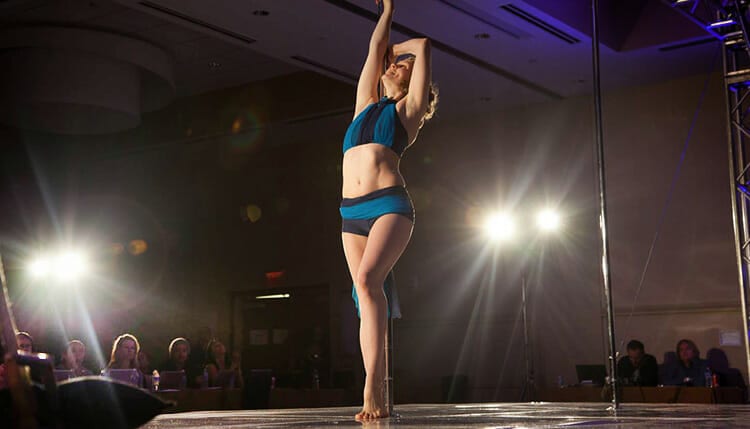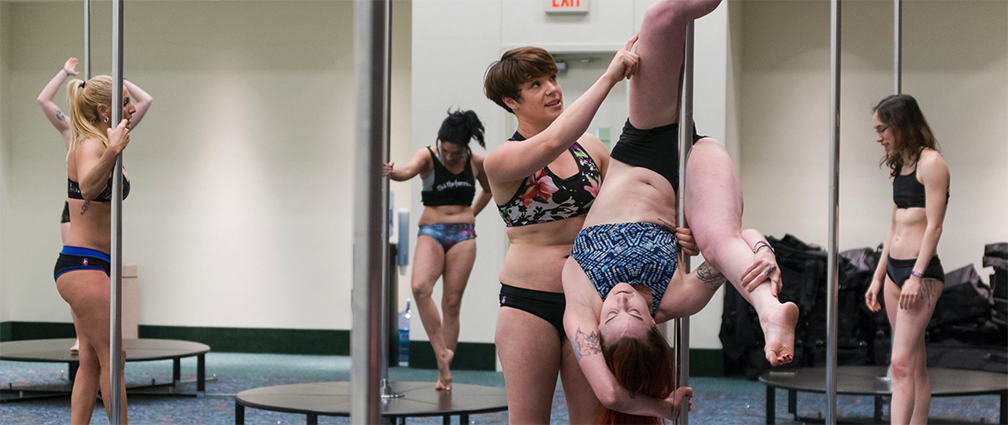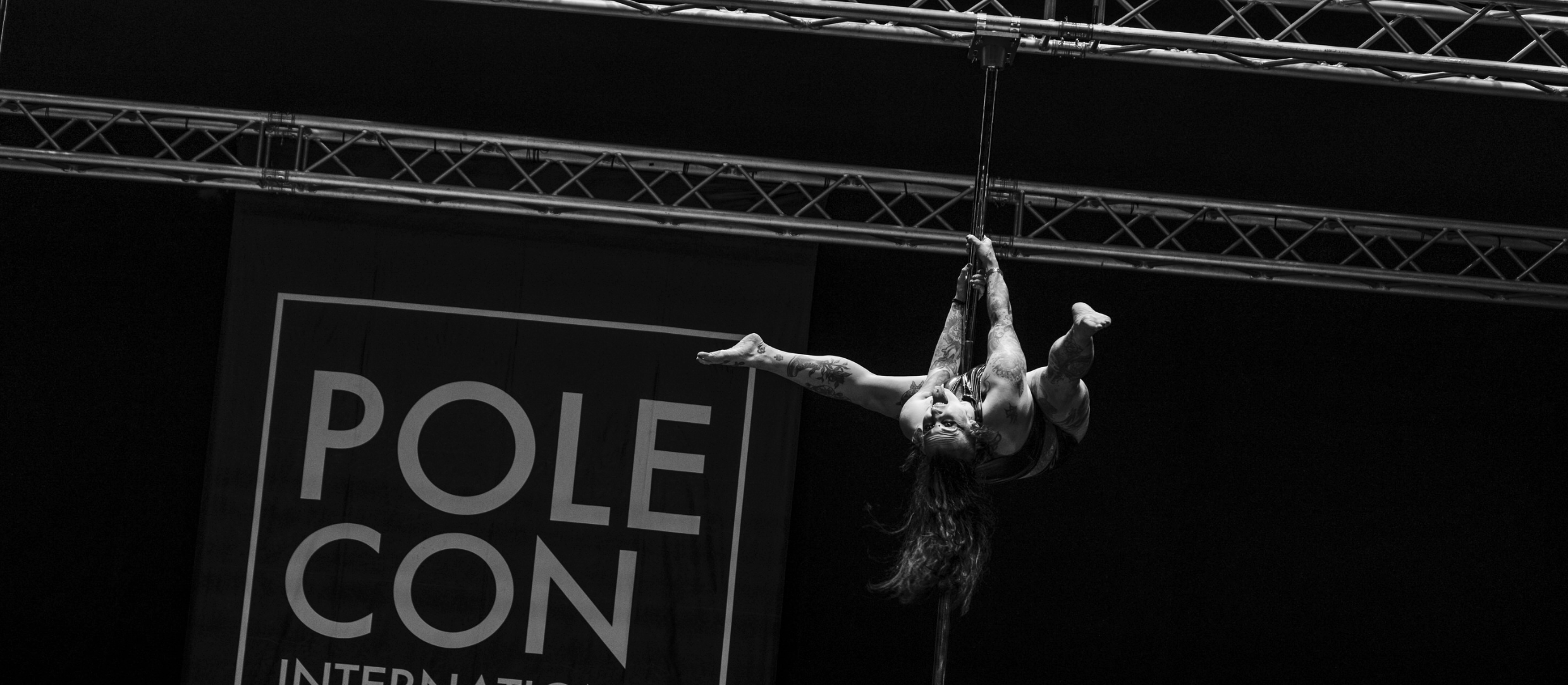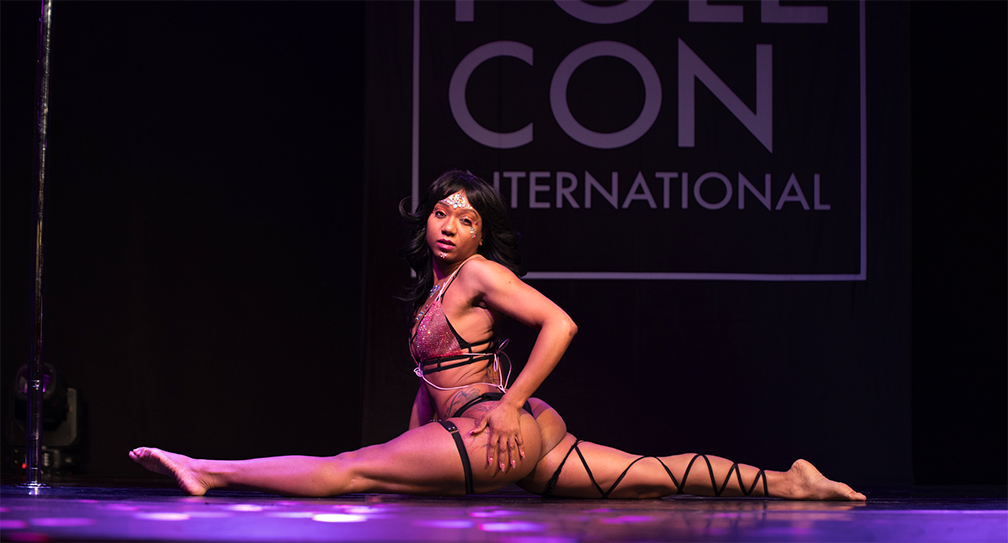I asked this a few weeks ago via social media and many people had some…

15 Tips for a Great Pole Performance
All of us dance in different ways and for different reasons. For some, it’s very personal and only ever happens inside of the studio classroom, or at home. But often as dancers grow more advanced, they want to take to the stage and be able to show what they’ve worked so hard at learning.
The jump from learning in classes to performing a piece in front of an audience can be huge and scary! This is especially true if you don’t have a background in performing, but it doesn’t completely stop being scary even if you do. I was terrified for my first few pole performances. In my second competition, I ended up completely panicking and forgetting my routine and desperately freestyled my way through it. It was hell at the time, but in retrospect I can look back and laugh!
Because performing is not something that comes naturally to me — I get VERY nervous — I’ve put a lot of thought into what the recipe is for a great performance. And as the competition season starts for 2015, it seems like a good time to open up this conversation. Here’s my list of the top things to keep in mind to make a great routine.
1. Tricks. This is what most polers start with, for obvious reasons. We spend most of our time learning tricks! But onstage, if you are performing back-to-back with many other pole dancers, they all start to look the damn same. Be innovative. Even if it’s not as “hard”, it’s definitely better to make different shapes. It wakes the audience and judges up.
2. Transitions. They are as important as the tricks. Every moment of your performance should be your moment to shine, not trick and then in-between.
3. Setup. If you can enter a trick in a surprising way, it is so much more interesting than if we can see the setup coming from a mile away. Surprises make an audience tune in much closer to your every move.
4. Face. Connect with the audience! The whole time. This will get you everywhere, seriously. This is a live show, and we want to see you living and communicating to us.
5. Use of Space. Use the damn stage. All of it. Move forward. Move backward. Move beyond the poles. Go in diagonals. Use highs and lows in both floor work and pole work. Use the whole pole…not just one invert’s worth. We are so fortunate to have a three dimensional canvas upon which to display our art…take advantage of it! (** Thank you to B.J. Pettigrew of Pole Sport Organization for this tip!)
6. Facings. Make sure your shapes are facing the right way. This can make all the difference. A trick executed properly facing the audience looks gorgeous, but the same thing with you putting in the same amount of effort can have very little impact if it can’t be seen. Practice where every move needs to start and end, and make sure you hit it on the right side of the pole. (** Thank you to Seanmichael Rau for this tip!)
7. Storytelling. Your audience will try to read a story into what you’re showing them. If you can give them one, it will make your performance much more memorable. Define the character you’re showing. Give it life – how does your character change throughout the course of the piece? What is your relationship to the poles?
8. Dynamism. The speed and energy with which you do things is a game changer. Spin fast as hell. Move slowly and then pull a powerful, fast accent. Do not just roll through everything at one pace – boring.
9. Flexibility. The only flexibility things that start to stand out when everyone is bendy is a huge oversplit and/or your ass on your head. Holding a split ten times in a routine does not look impressive when every single person is doing it.
10. Strength. The strongest moves may not actually come across as super hard unless you hold them a long time. On the flipside, just holding a pose for a long time can often “fake it” and make the move seem very powerful. If you give it a nice long pause, it lets the audience soak in that you’re showing them something impressive. Don’t rush.
11. Intention. Whatever you do, make it intentional. Clean lines. Active feet. Expressive lines. This doesn’t mean looking like a prima ballerina – unless that’s your character. But it means not being sloppy. Nothing should be an afterthought. Plan every detail of your movement. (** Thank you to Carolyn Peters for this tip!)
12. Mistakes. On the flipside of that, something ALWAYS goes wrong on stage. Don’t dread this and then panic when it happens – just be ready for it. The mark of a great performer is not that they’re flawless. It’s that they deal with mistakes and use them to make the performance even better.
13. Musicality. If you can truly align yourself with the music, especially sharp accents, the art becomes so much more powerful. Pick music that you can really connect to. Pick music that changes over the course of your piece, and gives you accents to work with.
14. Costume. & makeup & props & visuals: this makes the difference between looking like an amateur practicing in the studio and a professional putting on a show onstage. There is really no such thing as too garish – what might look crazy up-close looks impactful when far away on the stage. Things look about half as intense from far away. So double the intensity if you want the audience and judges to feel something. Rhinestones really do look incredible under stage light, especially if you’re spinning. So do bright colors.
15. Do you. Be authentic. Bring your own style. Don’t try to perform like anyone else – you can’t. You are you, not them. Be true to yourself and love what you’re performing. This will make the process and the performance worth it to you no matter what happens. And the audience will be able to feel it!
This is certainly a lot of things to think about, so to continue on the train of that last tip – make sure to just have fun. If that means sacrificing a few things, so what? Be patient with yourself. The greatest performers were not built in a day! Do your absolute best, and you will learn a ton. There is always your next performance to take it up even higher. It really is all about the journey. And the video! Make sure to get a great final video that you can keep forever, to memorialize the piece that you worked so hard on.
Latest posts by Liz Kinnmark (see all)
- We’re Here, We’re Queer, & We’re Never Gonna Leave! - May 24, 2019
- TOP 10 WORKSHOPS FOR THE BEGINNER POLE DANCER - May 13, 2017
- 5 THINGS YOGIS DO BETTER THAN POLE DANCERS - September 23, 2016
This Post Has 2 Comments
Comments are closed.



I think this is great. Very nicely done xxx
Excellent tips – all of them are true!! Your performance should be authentic to you, not trying to be someone else – that’s how you make it memorable and genuine.